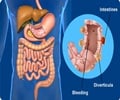Evolutionary Biologist Mary Jane West-Eberhard has given her theory about visceral adipose tissue or VAT called 'VAT prioritization hypothesis'.

‘Exceeding amount of VAT fat causes increased chronic inflammation, leading to insulin resistance and heightened susceptibility to type 2 diabetes.’





"Pathogenic obesity is an advantageous process gone awry," said West-Eberhard. "Very early in life the body makes decisions about where to store fat. It makes sense for poorly nourished fetuses to invest in VAT rather than in fat under the skin because VAT evolved to protect us from infections, but this choice sets us up for disaster if we have access to too many calories later in life." Researchers study obesity from different perspectives, but West-Eberhard took a broader look to ask how the body makes decisions about where to deposit fat and why.
"Trying to understand diseases related to obesity without understanding the abdominal structures that become obese is like trying to understand circulatory diseases without knowing the functions of the heart," West-Eberhard said.
Visceral fat is nature's super band-aid. Sometimes called "the abdominal policeman," a VAT-rich structure called the omentum, a loosely hanging fold of the membrane lining the abdominal cavity, sticks to wounds, foreign objects such as shrapnel and infection sites like a bandage full of antibiotics. In fact, surgeons sometimes use pieces of omentum to control severe postoperative infections. VAT surrounds the small intestine, defending the body from ingested pathogens and toxins.
"The fact that visceral fat tissue evolved to fight visceral infections provides a causal hypothesis for how high fructose sweeteners and saturated fats contribute to chronic diseases such as type 2 diabetes," West-Eberhard said. "They influence which bacteria grow inside the intestines [called the microbiome], making the intestinal walls more permeable and releasing more toxins into the bloodstream, stimulating the visceral immune system and potentially leading to chronic inflammatory disease."
Advertisement
In overweight individuals, a dangerous feedback loop may develop: increased VAT leads to increased chronic inflammation, which, in turn, leads to increased insulin resistance leading to further VAT storage and increased susceptibility to disease. Eventually, the ability to produce insulin is reduced and these individuals may need injected insulin to control type-2 (adult onset) diabetes.
Advertisement
In the future, she hopes to see more research revealing fetal cues that turn on VAT storage, the development of the visceral immune system, the role of the omentum, disease-resistance in obese individuals and the capabilities of people of different geographic and ethnic origins to allocate fat differently.
Source-Eurekalert















